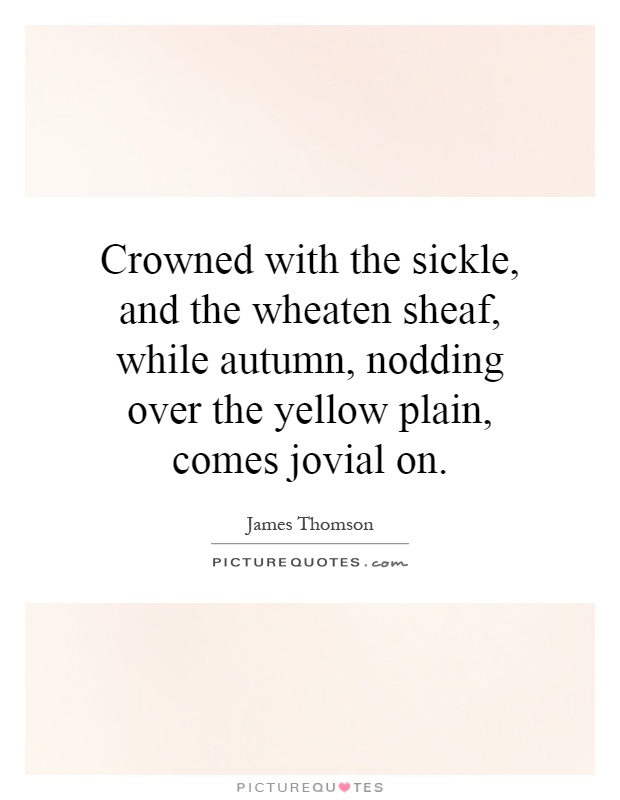Crowned with the sickle, and the wheaten sheaf, while autumn, nodding over the yellow plain, comes jovial on

Crowned with the sickle, and the wheaten sheaf, while autumn, nodding over the yellow plain, comes jovial on
James Thomson, a Scottish poet known for his descriptive and pastoral works, often celebrated the beauty of nature in his poetry. In his famous poem "The Seasons," Thomson captures the essence of autumn with the lines "Crowned with the sickle, and the wheaten sheaf, while autumn, nodding over the yellow plain, comes jovial on."These lines evoke a sense of abundance and harvest, as autumn is depicted as a time of plenty and celebration. The image of being "crowned with the sickle" suggests the act of reaping and gathering the fruits of labor, while the "wheaten sheaf" symbolizes the bounty of the harvest. Thomson's use of imagery here is rich and vivid, painting a picture of a golden landscape filled with ripe crops ready for the taking.
The phrase "comes jovial on" further emphasizes the festive and joyful atmosphere of autumn. The season is personified as a jovial figure, bringing with it a sense of merriment and cheer. Thomson's choice of words conveys a sense of warmth and contentment, as if autumn is a welcome guest arriving with gifts of plenty.
Thomson's depiction of autumn in these lines reflects his deep appreciation for the natural world and its cycles. He celebrates the changing seasons and the beauty of each in turn, finding wonder and inspiration in the sights and sounds of the natural world. Through his poetry, Thomson invites readers to pause and reflect on the beauty and abundance that surrounds them, reminding them of the importance of connecting with nature and finding joy in its rhythms.












 Friendship Quotes
Friendship Quotes Love Quotes
Love Quotes Life Quotes
Life Quotes Funny Quotes
Funny Quotes Motivational Quotes
Motivational Quotes Inspirational Quotes
Inspirational Quotes